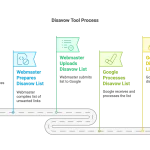Matt Cutts recently made another of the videos in which he answers questions from the webmaster and SEO communities. This video specifically addressed whether to use “rel=nofollow” with widgets and infographic links.
Judging by the many questions and confused statements about nofollow links, one could make a safe assumption. Google’s message about which links should or should not pass “link juice” is likely unclear to most people.
In this article, we’ll explain the idea behind nofollowing links, their effect, and which links you should nofollow. But first, here’s what a nofollow link looks like:
<a href="http://aseohosting.com" rel="nofollow">ASEOHosting</a>
Why Should Some Links Not Pass PageRank?

Towards the end of the video, Cutts says:
I wouldn’t expect a widget link to have the same weight as an editorial link. An editorial link is freely given. It’s when someone recommends something and talks about it.
Importance of incoming links
Google uses the number of incoming links to a page as a key factor. This helps them determine a page’s ranking. If other factors are equal, many links from high-authority domains will lead to a better ranking. This is compared to a page with fewer incoming links.That’s more or less how Sergey Brin’s original PageRank worked.
When Matt Cutts says “editorial links,” he means links placed on a page because they are relevant to the content. He also means links that site owners include because they believe they point to something interesting or informative for their readers.
Google uses those links to assess quality and relevance. Therefore, Google needs to distinguish between “editorial links” and other link types. Someone might have paid for these other links. Or, other code might include them automatically. Examples of such code are widgets or WordPress themes.
To some degree, Google can filter out links it doesn’t want to follow. However, it’s not always easy to distinguish between editorial links and those motivated by money or a desire to manipulate search rankings.
The “rel=nofollow” tag, when added to a link, tells Google’s search engine crawlers that they should not follow the link or count its existence as a ranking signal. Google insists that sites nofollow obviously paid links. Failure to do so frequently leads to penalties for those sites.
The case for paid links is obvious, but there are edge cases, like with widgets and infographics where, until now, it’s not been quite clear.
What Should Be Nofollowed?
TTo be safe, you should nofollow anything that doesn’t count as an editorial link (as described above). The links that should be nofollowed include:
Paid Links.
Links in advertisements.
In advertorials (aka native advertising).
At widgets, theme footers, infographics.
Signature links in forums etc.
Of course, you might ignore this advice, and Google might not notice in the short term. However, in the long term, algorithm improvements for detecting spurious links will improve. This is especially true for massively duplicated, keyword-rich links.
Links serve various purposes. They don’t just pass PageRank. A link Google doesn’t follow isn’t always useless. It can drive traffic. It can also build brand awareness. So, site owners shouldn’t worry too much about the trend of nofollowing. If a site has great content, people will naturally link to it. They will also share it on social media. This will lead to a strong link profile growing naturally.




